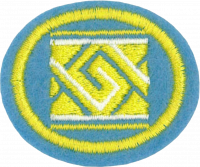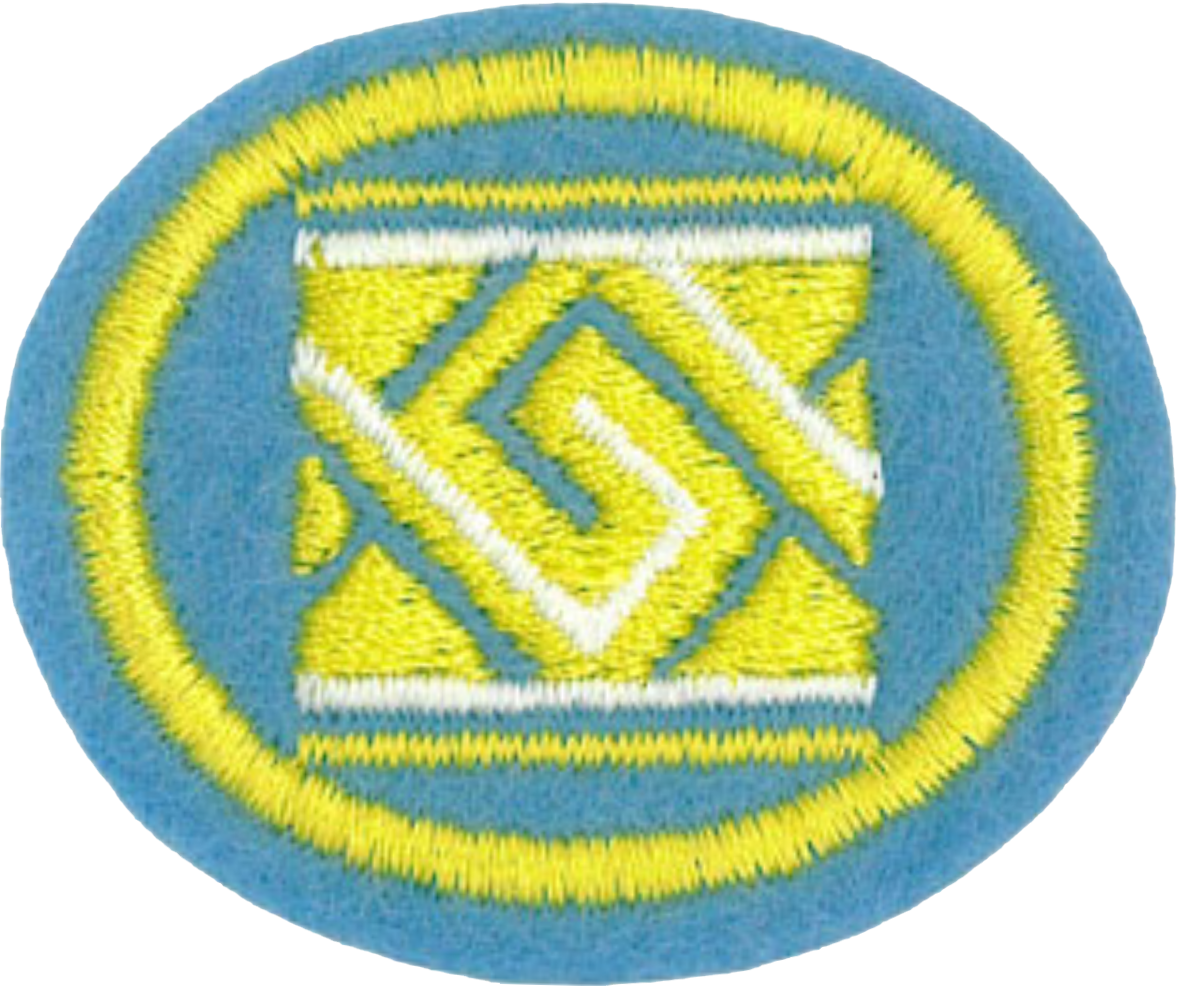Especialidades JA/Trabajos en telar/Respuestas
Nivel de destreza
1
Año
1938
Version
21.12.2025
Autoridad de aprobación
Asociación General
1
2
2a
2b
2c
2d
2e
2f
3
Tape the end of a piece of yarn to the back of the loom and then run the yarn through one of the slits near the edge of the cardboard. Wrap the yarn around the cardboard to form the warp, using the slits as the heddle. Then cut off the yarn and tape it down. At this point, you may begin weaving the woof into the warp. When the woof reached the far edge you may cut the warp yarns apart so that you have equal lengths of yarn hanging off both ends of the cloth. These can be tied together in pairs to leave a fringe. To make a purse, fold the cloth into thirds and whip stitch the edges with more yarn. The upper third will serve as a flap. The whip stitching should start at the bottom center. When you reach the upper edge, use the yarn as a purse handle, and then whip stitch down the other side until you reach the bottom center again. Tie it off and declare victory.
If the boys in your club object to making a purse, use a little imagination to make a hatchet cover instead. They are essentially the same, except that a hatchet cover must have a gap in the bottom for the hatchet handle to slip through. This opening should be lined up to match the hatchet.
4
5
Small, inexpensive looms and loops can be found in the craft departments of large stores or in craft supply stores. These looms are typically 18 cm![]() square and have several pegs located around the edges. The loops themselves are the byproduct of the hosiery industry, being cut from the toes of stockings during their manufacture. They are stretched across the loom and looped over the pegs to form the warp. A hook is then woven through the warp, and a weft loop is attached to it and pulled through. The weft loop is then hooked over a peg. Once all the weft loops are in place, the hook tool can be used to form a running chain around the edge. Each loop is lifted from the peg and passed through the end of an adjacent loop. Then that loop is unhooked and passed through the end of its neighbor. This procedure is followed until all the loops have been unhooked. The last loop is pulled through a little farther than the others and pulled tight.
square and have several pegs located around the edges. The loops themselves are the byproduct of the hosiery industry, being cut from the toes of stockings during their manufacture. They are stretched across the loom and looped over the pegs to form the warp. A hook is then woven through the warp, and a weft loop is attached to it and pulled through. The weft loop is then hooked over a peg. Once all the weft loops are in place, the hook tool can be used to form a running chain around the edge. Each loop is lifted from the peg and passed through the end of an adjacent loop. Then that loop is unhooked and passed through the end of its neighbor. This procedure is followed until all the loops have been unhooked. The last loop is pulled through a little farther than the others and pulled tight.
References
- http://members.aol.com/mrsspyboy/weaving1.htm
- Wikipedia articles


